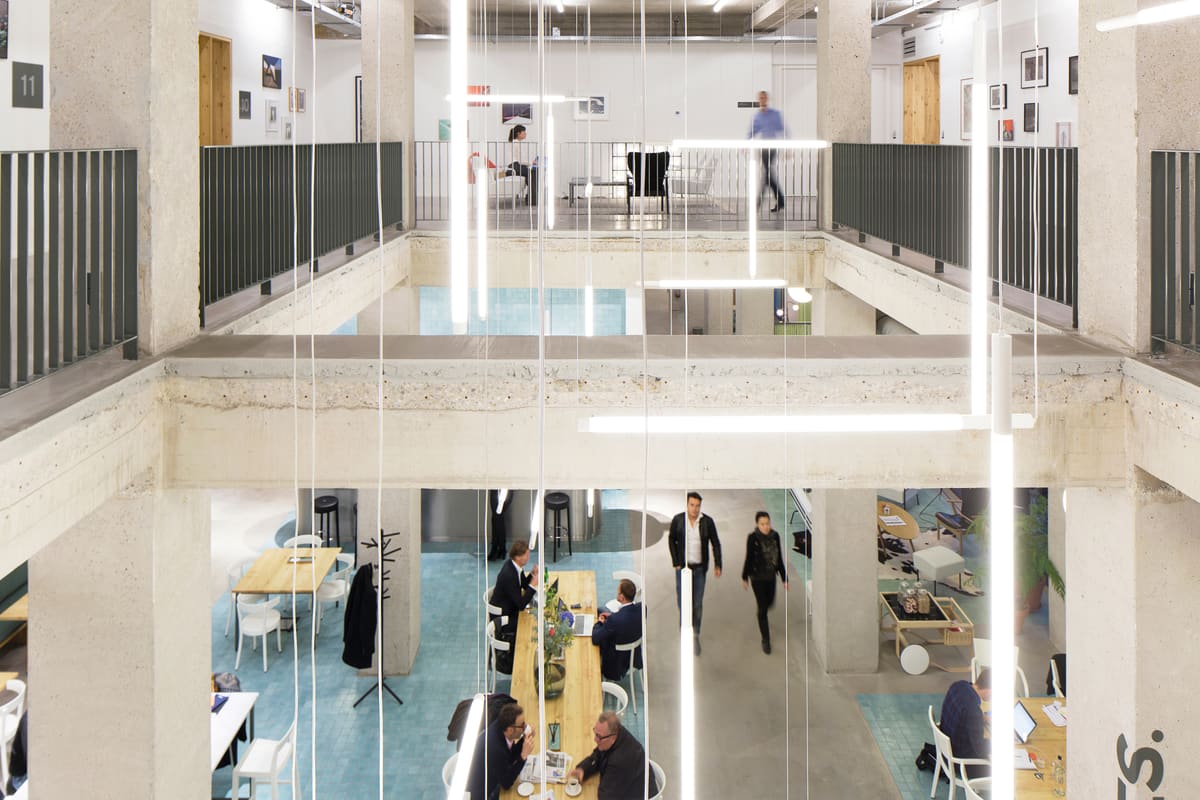Described as “humankind’s most important to-do list”, the UN’s Sustainable Development Goals are a universal call to action to address economic, social and environmental challenges across the globe by 2030. How can hybrid help companies contribute to meeting them?
In 2015, the UN established 17 Sustainable Development Goals as a universal call to action to address global economic, social, and environmental challenges. According to a leading voice in the international human rights community, these goals represent "humankind's most important to-do list." The goals are:
- No Poverty
- Zero Hunger
- Good Health and Wellbeing
- Quality Education
- Gender Equality
- Clean Water and Sanitation
- Affordable and Clean Energy
- Decent Work and Economic Growth
- Industry, Innovation, and Infrastructure
- Reduced Inequalities
- Sustainable Cities and Communities
- Responsible Consumption and Production
- Climate Action
- Life Below Water
- Life on Land
- Peace, Justice, and Strong Institutions
- Partnerships for the Goals
Achieving these ambitious objectives calls for a united effort from individuals, businesses, and governments alike. With that in mind, in this article, we'll explain the reasons why hybrid working has much to offer businesses looking to align with the UN's Sustainable Development Goals.
Business benefits
Before looking at the Sustainable Development Goals (SDGs) in more detail, it’s worth noting that businesses can gain an advantage by playing their part in achieving them. As the UN points out, “The SDGs represent a major opportunity [for businesses] to shape, steer, communicate and report their strategies, goals and activities, allowing them to capitalise on a range of benefits.” They highlight five reasons why companies should align with the goals:
- Boost revenue by finding new ways to stand out in the market.
- Attract and retain employees by being a desirable company to work for.
- Strengthen supply chain reliability by promoting sustainability and making operations more efficient.
- Appeal to a broader range of investors, increasing growth opportunities.
- Stay ahead by complying with regulations and managing risks effectively, ensuring smooth business operation.
So, how can businesses begin embracing the agenda driven by SDGs and contribute to their realisation? One fast-track route is to implement a hybrid work policy. Here’s how it contributes to six of the goals, starting with Goal 3.
Goal 3: Good Health and Wellbeing
A new IWG study shows that hybrid workers exercise more, enjoy a better night’s sleep and eat more healthily – all while being more productive at work. That’s thanks to the time hybrid working frees up, whether working from home or from a satellite office closer to home. With less time commuting, workers have more time to devote to exercise and cooking nutritious meals, with the result that over a quarter of those surveyed say they’ve lost weight since before the pandemic.
Goal 5: Gender Equality
The flexibility that hybrid working offers is especially important for women, who tend to shoulder more domestic responsibilities. According to the Pew Research Center, the majority of women (59%) say they do more household chores than their spouse or partner, while only 6% say their spouse or partner does more. What's more, exhaustion and burnout rates are highest among female workers, so giving them more time for family, friends and self-care can make a crucial difference.
Because it empowers women to establish healthy work-life boundaries in this way, hybrid significantly contributes to Goal 5: Gender Equality. Traci Mabrey, General Manager of Factiva at Dow Jones, highlighted the advantages in IWG’s ‘Cracking the Glass Ceiling’ white paper: "The hybrid model has really been a game changer for women. It’s given us opportunities to find and execute our boundaries. While the idea of women ‘having it all’ is appealing, being a working woman is not about how much farther we can stretch ourselves between our work and personal lives. Hybrid work environments provide women with the space they need to say no, to delegate and to healthily compartmentalise.”
Goal 8: Economic Growth
Increased productivity is needed to achieve Goal 8 – Economic Growth – and that’s exactly what’s been shown to result from hybrid working. Hybrid gives workers the opportunity to choose when and where they’re likely to be at their most effective, allowing individuals to play to their own strengths.
Hybrid also saves money. Global Workplace Analytics estimates that a typical employer can save around $11,000 annually for every staff member who works remotely half the time – and this quickly adds up when applied across a whole business. The cash it frees up can then be redirected into growth or training, for example.
Goal 11: Sustainable Cities and Communities
Hybrid working plays a significant role in achieving Goal 11: Sustainable Cities and Communities. By enabling people to work from home or in local flexspaces, hybrid work models contribute to the creation of job opportunities within communities, boosting the local economy and social dynamics. By adopting a 'hub-and-spoke' approach, with a central headquarters and smaller satellite offices close to employees' homes, businesses can enhance wellbeing and community spirit while supporting the development of sustainable ‘15-minute cities’.
Goals 7 and 13: Green Energy and Climate Action
Finally, turning to Goal 7, Green Energy, and Goal 13, Climate Action, hybrid working doesn’t just benefit people – it benefits the planet. That’s because it reduces the amount of time people spend commuting, meaning it can lead to significant reductions in fossil fuel use and greenhouse gas emissions. But that’s not all — it also enables companies to downsize their office properties and transition to advanced, environmentally efficient shared workspaces, leading to a further decrease in their overall carbon footprint.
In fact, IWG’s landmark study with Arup, a global leader in sustainable development, sheds light on the remarkable carbon savings facilitated by hybrid working and its potential to make a significant impact on the climate crisis. The study measured the environmental effect of hybrid working on six cities across the US and UK: Los Angeles, New York City, Atlanta, London, Manchester and Glasgow. Its key finding is that simply allowing people to work close to home, enabling them to split their time between a local workplace and home, has the potential to reduce an employee’s work-related carbon emissions by between 49% and 90%.
Also in line with this goal, IWG is proud to be certified carbon neutral, meaning it provides all of its millions of customers worldwide with carbon-neutral workplaces. Its goal to further minimise its impact on the environment is underscored by its MSCI AA ESG rating as well as its recent RE100 accreditation for a commitment to only source 100% renewable electricity by 2030.
IWG CEO Mark Dixon underscores the ecological importance of embracing hybrid work: "The single biggest change we can all make is to provide people with the choice to work closer to where they need to be, and with lower impact on the environment. And that’s down to all of us."
Discover how IWG can help your company contribute to the UN Sustainable Development Goals via hybrid work, with advice on your workplace strategy and access to 4,000 flexible workspaces worldwide.






